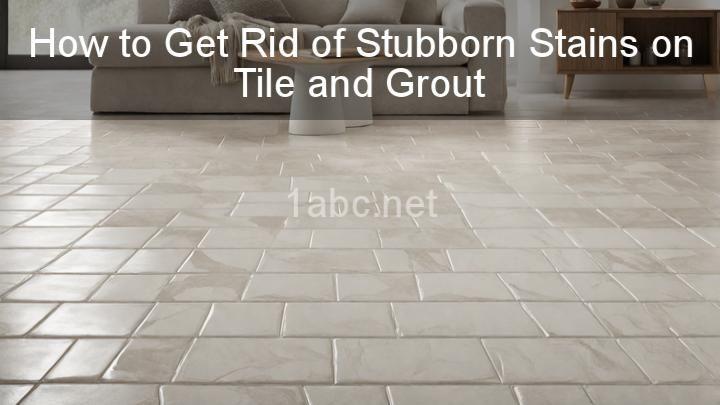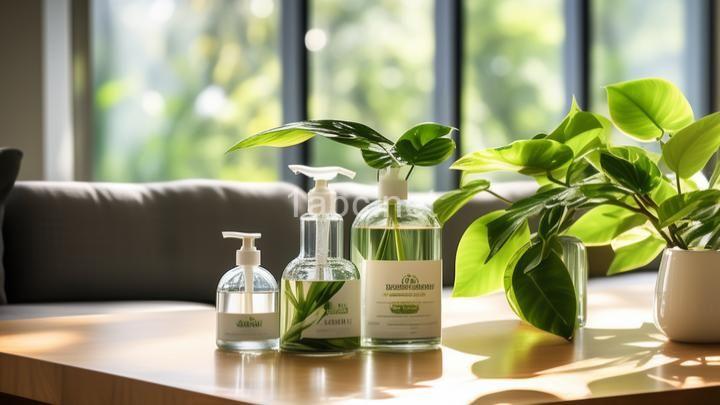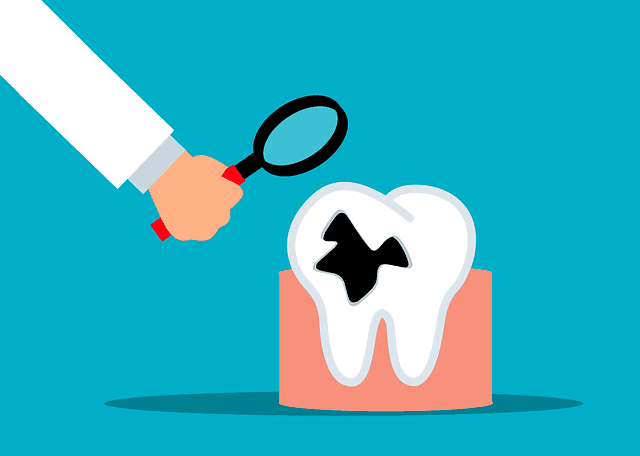How to Get Rid of Stubborn Stains on Tile and Grout
Introduction:
I. Understanding the Types of Stains:
II. Preparing for the Cleaning Process:
III. Step-by-Step Cleaning Instructions:
Step 1: Pre-Treatment
Step 2: Choosing an Effective Cleaning Solution
Step 3: Applying the Cleaning Solution
Step 4: Scrubbing Techniques
Step 5: Rinsing and Drying
IV. Prevention Tips:
Conclusion:

Introduction:
Hey there! Are you tired of looking at those stubborn stains on your tile and grout? We get it, they can be a real eyesore. But don't worry, we're here to help you tackle those pesky stains and restore the beauty of your floors. Maintaining clean tile and grout is not only important for the appearance of your home but also for the health and hygiene of your living space. In this blog post, we will guide you through the process of getting rid of stubborn stains on tile and grout, step by step. So, let's roll up our sleeves and get started!
I. Understanding the Types of Stains:
Before we dive into the cleaning process, it's important to understand the different types of stains that can occur on tile and grout. Common examples include food spills, mold and mildew, soap scum, hard water stains, and even pet stains. Each type of stain requires a slightly different approach, so it's essential to identify the specific stain before proceeding with the cleaning process.
II. Preparing for the Cleaning Process:
Now that you have a good idea of the stains you're dealing with, it's time to gather the necessary supplies for the cleaning process. You don't want to be halfway through and realize you're missing something, right? Here's a list of supplies you'll need:
- Scrub brush: Look for a brush with stiff bristles that can effectively remove dirt and grime without damaging the surface.
- Cleaning solution: Depending on the severity of the stains, you can choose between homemade solutions or store-bought cleaners. We'll discuss some DIY recipes later on in this post.
- Gloves: It's always a good idea to protect your hands while cleaning. Choose gloves made from durable materials that can withstand the cleaning process.
- Safety gear: If you're using harsh chemicals, make sure to wear protective eyewear and a mask to avoid any potential harm.
- Soft cloth or sponge: These will come in handy when you're applying the cleaning solution and scrubbing the surfaces.
Remember, safety should be your top priority, so ensure proper ventilation during the cleaning process and follow any instructions or warnings on the cleaning products you use.
III. Step-by-Step Cleaning Instructions:
Now that you're fully prepared, let's dive into the step-by-step cleaning instructions to tackle those stubborn stains on your tile and grout.
Step 1: Pre-Treatment
Before applying any cleaning solution, it's important to prepare the surface by removing loose debris or dirt. You can do this by vacuuming or sweeping the area. This will help ensure that the cleaning solution can penetrate deeply into the stains without any obstruction.
Step 2: Choosing an Effective Cleaning Solution
Now comes the fun part - choosing the right cleaning solution for your stains. Depending on the severity of the stains, you can opt for homemade solutions or store-bought cleaners. Let's explore both options:
a. Homemade solutions: If you prefer natural cleaning methods, you'll be glad to know that you can easily create your own cleaning solutions using household ingredients. Here are a few recipes to get you started:
- Baking soda and vinegar: Create a paste by mixing baking soda and vinegar. Apply the paste to the stained area and let it sit for a few minutes before scrubbing.
- Lemon juice and borax: Mix lemon juice and borax to form a paste. Apply the paste to the stains and let it sit for a while before scrubbing.
- Hydrogen peroxide and baking soda: Create a paste by mixing hydrogen peroxide and baking soda. Apply the paste to the stains and let it sit for some time before scrubbing.
b. Store-bought cleaners: If you prefer the convenience of ready-to-use cleaners, there are plenty of options available in the market. Look for cleaners specifically designed for tile and grout, and follow the instructions on the packaging for the best results.
Step 3: Applying the Cleaning Solution
Now that you have your cleaning solution ready, it's time to apply it to the stained tile and grout surfaces. Using a soft cloth or sponge, apply the solution generously to the affected areas. Make sure to cover the entire stain and let the solution penetrate for a few minutes.
Step 4: Scrubbing Techniques
Now comes the real work - scrubbing those stubborn stains away! But remember, it's important to scrub gently at first to avoid damaging the surface. Start with light, circular motions and gradually increase the pressure if needed. Use your scrub brush or sponge to scrub the stained areas thoroughly, paying extra attention to the grout lines where stains tend to accumulate.
Step 5: Rinsing and Drying
Once you're satisfied with the scrubbing, it's time to rinse off the cleaning solution from both the tile and grout surfaces. Use clean water or a damp cloth to thoroughly rinse the area and remove any residue. This step is crucial to prevent any leftover cleaning solution from attracting dirt and causing future stains. After rinsing, allow the surfaces to dry completely. Ensure proper ventilation during the drying process to avoid any moisture buildup.
IV. Prevention Tips:
Congratulations! You've successfully tackled those stubborn stains on your tile and grout. But how do you ensure they don't come back? Here are a few prevention tips to keep your floors looking clean and stain-free:
- Regular maintenance routines: Establish a regular cleaning routine to prevent stains from becoming stubborn. Sweep or vacuum the area regularly to remove loose dirt and debris. This will minimize the chances of stains settling into the grout lines.
- Grout sealers: Consider using grout sealers to protect the grout lines from stains and moisture. Apply the sealer according to the manufacturer's instructions, and reapply as needed to maintain its effectiveness.
- Tackle stains promptly: Don't let stains linger for too long. The longer a stain sits, the harder it becomes to remove. Deal with stains as soon as you notice them to prevent them from becoming stubborn and deeply ingrained.
Conclusion:
We hope this comprehensive guide has empowered you to tackle those stubborn stains on your tile and grout successfully. By understanding the types of stains, preparing for the cleaning process, following the step-by-step instructions, and implementing preventive measures, you can achieve clean and beautiful floors. Remember, persistence is key when dealing with stubborn stains, so don't get discouraged if it takes a few tries to fully remove them. With the right approach and mindset, you'll have your tile and grout looking brand new in no time. So go ahead, take action, and say goodbye to those stubborn stains once and for all!
FREQUENTLY ASKED QUESTIONS
What causes stubborn stains on tile and grout?
Stubborn stains on tile and grout can be caused by various factors. Here are some common causes:
- Dirt and grime: Regular foot traffic, especially in high-traffic areas, can lead to a buildup of dirt and grime on the tile and grout.
- Mold and mildew: Bathrooms and other areas with high humidity levels are prone to mold and mildew growth. These can leave stubborn stains on the tile and grout.
- Hard water deposits: In areas with hard water, mineral deposits can accumulate on the tile and grout, causing stains that are difficult to remove.
- Spills and stains: Accidental spills of substances like coffee, wine, or oil can penetrate the porous grout and cause discoloration.
- Insufficient cleaning: Neglecting regular cleaning and maintenance can allow stains to set in and become more stubborn over time.
It's essential to identify the cause of the stain to determine the most effective cleaning solution and prevent future staining.
Can I use regular household cleaners to remove stubborn stains?
Using regular household cleaners can be effective in removing some stubborn stains, but it ultimately depends on the type of stain and the surface you are trying to clean. For common stains like coffee, tea, or food spills, general-purpose cleaners or mild dish soap can often do the job. However, for more specific or difficult stains like wine, ink, grease, or mold, it is usually recommended to use specialized stain removers or cleaning products that are designed to target those specific stains. It's always a good idea to check the label or manufacturer's instructions on any cleaning product to ensure that it is safe to use on the specific surface or material you are trying to clean. Additionally, it is important to spot test any cleaner in an inconspicuous area before applying it to the entire stained area to avoid any potential damage or discoloration.
Are there any specific tools or equipment required for this task?
Yes, the tools or equipment required for a specific task can vary depending on the nature of the task itself. Could you please provide more details about the task you are referring to so that I can assist you more accurately?
How often should I clean tile and grout to prevent stubborn stains?
To prevent stubborn stains on tile and grout, it is generally recommended to clean them at least once a week. This regular cleaning routine helps to remove dirt, oils, and other debris that can accumulate and cause discoloration over time. However, the frequency may vary depending on the foot traffic and level of usage in the area. In high-traffic areas or places prone to spills, more frequent cleaning may be necessary to maintain the cleanliness and appearance of the tile and grout. Remember to also promptly clean up any spills or stains as soon as they occur to prevent them from setting and becoming difficult to remove.



